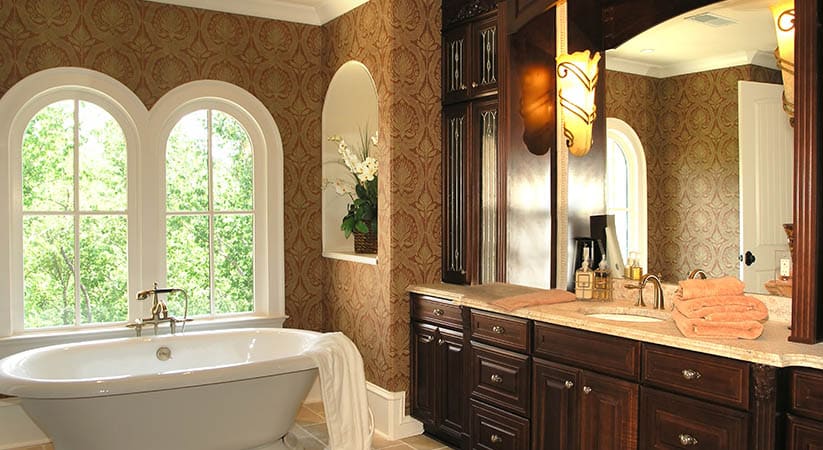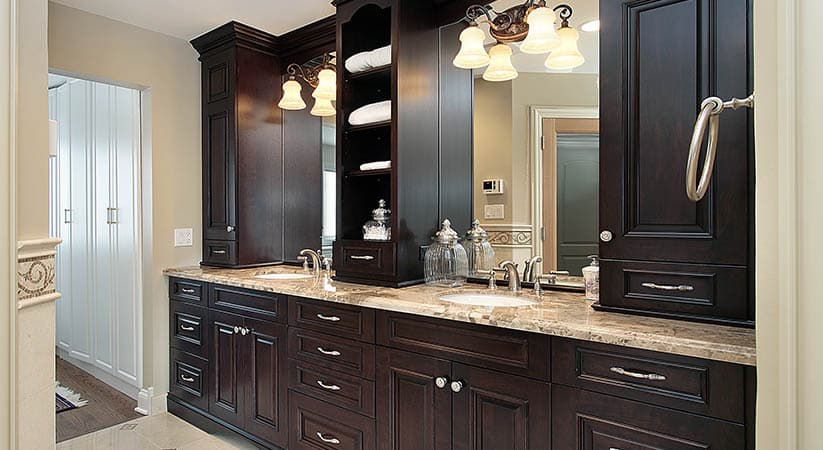Drywall is a popular bathroom building material in modern homes. It is known to be economical and easy in terms of installation when compared to its counterparts. However, there are different types of drywalls, which make it difficult for people to choose who want to do bathroom remodeling. We will discuss the types in detail so that you can make the right decision.
Regular Drywall Or White Board
This one happens to be the most common type. It is identified by one side colored white and the other brown. Plus, it is not only suitable for bathrooms but also other rooms. Regular drywall is made using gypsum but does not possess special mildew and mold resistance characteristics like other types that can withstand moisture and are relatively more durable.
While regular drywall isn’t particularly made for bathrooms and kitchens, it’s more commonly used in bedrooms. The only reason some homeowners tend to use regular drywall in their bathrooms is due to the budget. But then again, as it is not able to tackle moisture, regular drywall does not last long.
Green Board Drywall
Green board drywall comes with the ability to withstand moisture, unlike regular drywall. It is easily identifiable by its green covering which makes it stand out from the rest. Although green board drywall is made using the same materials as regular drywall, its paper coverings are coated in wax.
Furthermore, it is also used as a tile backer in areas that experience limited amounts of moisture such as bathrooms, laundry rooms, kitchens, etc. The purpose of greenboard drywall is not to waterproof the room but to fight and absorb the moisture that eventually builds up due to humidity.
This means that you should not be using it if it directly contacts the water. Considering the wax coating, green board drywall is slightly more durable than regular drywall but carries a higher price tag as well.
Blue Board Drywall
This drywall is employed for veneer plastering. Even though blue board drywalls come with a gypsum interior, the surface paper features special absorption qualities that make it resemble actual plaster once finished.
As a result, the manufacturing process of blue board drywall is slightly different and complicated when compared to its previous types. Considering its features, blue board drywall is a better choice for bathrooms as they are highly water and moisture-resistant. Plus, they also help reduce noise.
Paperless Drywall
Paperless drywall instead of being covered with paper uses fiberglass, which protects the gypsum board from rotting and offers much higher mildew and mold resistance. Even though it is a lot more expensive than regular drywall, paperless drywall is becoming more and more popular each passing day.
Additionally, the materials and processes utilized to manufacture paperless drywall make it slightly tougher but considering the advancement in technology, experts and installers have no problem cutting them. The ideal appearance and finish of paperless drywall is smooth and clean. However, it comes with slight textures that experts need to deal with. So, make sure your bathroom remodeler is experienced enough to do so.
Purple Drywall
Purple drywall is very similar to green drywall in properties and characteristics, but it offers a higher mildew and mold resistance. The gypsum interior of purple drywall is coated with 100 percent recycled paper which makes it a lot more superior in terms of durability against water when compared to green drywall.
In addition to that, purple drywall is suited for all types of walls. The purpose of installing purple drywall is to help areas with high mildew and moisture ratio. This means purple drywall is the perfect option if water will come in direct contact. Moreover, it also has a bit noise reduction property when we compare it with green drywall. But if you need proper soundproofing, choose a soundproof drywall.
Type X Drywall
Type X drywall is a fire-resistant drywall because it’s made with a fiberglass core. The biggest advantage of choosing Type X drywall is that it can be installed in several layers to stop the progression of fire. Plus, its extra thickness can also help insulate the room especially when it comes to noise.
The manufacturing of Type X drywall is also different and has to pass through several quality assurance tests to ensure it stands up to the mark. When compared to regular drywall, Type X drywall is a lot harder to cut and work with. This is why it is mostly used in apartment buildings and other properties to prevent fire hazards.
Soundproof Drywall
Finally, soundproof drywall is made using laminated drywall combined with a mix of gypsum, wood fibers and polymers. This helps the drywall turn denser than regular drywall and helps reduce noise and sound.
However, it is relatively harder to cut than other options. Considering the materials used for the manufacturing process of this drywall type, soundproof drywall is mostly used for or in areas that require silence.
What Drywall To Use For Bathroom Walls?
Now that we have discussed the different types of drywalls, you need to make the right decision for your bathroom. The most common or preferred type for bathrooms is green drywall due to its high moisture-resistant properties.
However, that is not going to be a good decision if water is supposed to come directly in contact with the wall. If you wish to opt for the best option and are willing to spend money, Purple drywall is going to be worth it. If you are still confused, perhaps the best way to pick the right option is by defining your needs and preferences.
If possible, ask your neighbors, friends, and family members for advice. It might be that they have drywalls installed in their house and you might be able to take a closer look. Plus, you can also consult an expert for drywall installation. This will help you properly weigh the advantages and disadvantages considering every situation is different.
How To Deal With Mold On The Drywall?
If you have drywall installed in your bathroom and you suddenly spot mold, you should stay calm and not panic. The first thing to do is find the source of the mold growth. Most homeowners get straight down to removing the mold, which is not a permanent solution.
It might be that a tile, pipe, etc. is leaking and you will need to get it fixed first. If you ignore the issue, the mold spot will reappear after a few days since the leakage hasn’t stopped.
Next, you need to inspect the drywall. When a drywall becomes too soft and tender, this shows that the moisture has damaged the drywall beyond repair. In such a case, it is better to remove the drywall, fix the leakage, and install a new drywall.
Conclusion
Choosing the right type of drywall for your bathroom is surely going to be a confusing situation unless you keep the tips mentioned above in mind. It might seem easy but do your research and get the advice of various experts. This will get you multiple options and you can choose the best one based on your preferences and budget. If you have already hired a bathroom remodeling contractor, ask them which drywall is right for you. streamline



